French Galette des Rois for Epiphany Explained
39 min read Discover the royal French Epiphany pastry—its history, frangipane filling, hidden fève, and crown-worthy traditions—plus serving tips to celebrate Twelfth Night at home. October 10, 2025 21:07
The line at the boulangerie snakes onto the sidewalk, scarves and cheeks flushed from the January cold. Inside, the glass case looks like a field of sunbursts—golden lids, glossy and scored with radiating chevrons. The air carries that unmistakable scent: butter lifting into layers, almonds surrendering their perfume, a whisper of rum. A child presses a mittened hand against the pane and says, almost reverentially, “La galette.” It’s Epiphany season in France, and for a few short weeks, the country remembers how to be a kingdom—one crowned not by coronations but by flaky pastry.
What Is Epiphany, and Why Do the French Crown a Cake?

Epiphany, January 6, marks the arrival of the Magi at the cradle—three travelers following a star, bearing gifts across a winter-black sky. In France, it also marks a return to the table after the fêtes. The holidays don’t so much end as slide into one last ritual: slicing into the Galette des Rois, the King Cake.
If you listen closely in any French kitchen that first week of January, you’ll hear the script. The galette comes home in a crinkling paper sleeve, a lightweight gold paper crown nested beside it like a promise. The youngest child ducks under the table (or squeezes eyes shut) to call out the names of family members, one by one, assigning slices at random—a ritual designed to ensure the fève, the hidden charm, is fairly found. When someone’s fork strikes porcelain—or a small bean—they’re crowned King or Queen, and someone invariably raises a glass to shout: “Le roi boit!” The king drinks.
Galette des Rois is older than its butter sheen. Long before almond cream, Romans celebrated Saturnalia with a bean baked into a cake; the person who found it presided over the festivities, a king for a day. That bean persisted through the Middle Ages into the Twelfth Night traditions of Europe. In France, the custom evolved—sometimes courted by the Church, sometimes frowned upon, sometimes renamed to appease political winds (during the French Revolution, some patriots renamed it the “gâteau de l’égalité,” equality cake). But the essential joy stayed the same: a democratic slice, a momentary crown, a midwinter reason to gather.
Today, bakeries begin selling galettes in late December and keep them until the end of January. Officially, Epiphany is the 6th, but many families celebrate on the first Sunday of the month. In workplaces, you’ll often find galettes arriving unannounced in break rooms, a fragrant invitation to leave emails unread for five minutes and gamble for a crown.
Galette des Rois vs. Its Royal Cousins

Not all kings wear puff pastry. The Galette des Rois most people imagine—two disks of laminated dough enclosing frangipane—dominates Paris and much of northern France. But cross a few regions and the crown changes shape:
- Provence, Languedoc, and much of the south bake the gâteau des rois: a ring-shaped brioche scented with orange blossom water, studded with jewel-toned candied fruit, often dusted with sugar crystals. It looks like a halo and tastes like a scented cloud. Slice it open and you’ll likely find a fève and a paper crown tucked into the box.
- In Spain and parts of Latin America, the Roscón de Reyes plays a similar role: a sweet yeasted ring adorned with colorful candied citrus and sugar, sometimes split and filled with whipped cream or pastry cream. A figurine and a dried bean are hidden inside—find the figurine and you’re crowned; find the bean and you’re paying for next year’s cake.
- In New Orleans, King Cake arrives later, tied to the start of Carnival. It’s a different creature entirely: a cinnamon-laced, braided brioche oozing with cream cheese or pecans, festooned with purple, green, and gold sugar. A tiny plastic baby stands in for the fève.
- In Franche-Comté, you’ll meet the galette comtoise, made not with puff pastry but with a choux dough, baked into a golden disk perfumed with orange blossom—lighter, almost custardlike.
- And then there’s Pithiviers, a close cousin of the Parisian galette. Traditionally stuffed with almond cream, it’s often domed and scalloped, glossy and beautifully scored—but historically without the fève.
What unites them all is the midwinter instinct to share something warm, sweet, and ceremonial; to play at monarchy while projecting egalitarian wishes onto a dessert. The French galette, with its buttery shatter, just happens to win the beauty pageant.
Anatomy of a Classic Parisian Galette

A classic Galette des Rois is a study in simple luxury. Nothing about it shouts; it’s three components executed with precision.
- The shell: two circles of pâte feuilletée—puff pastry—rolled to about 3–4 mm. The exterior bakes to a lacquered mahogany, crisp and flaky, the layers visibly stratified like geological strata in miniature. When you break it, the shards crackle, then melt on the tongue.
- The heart: frangipane. In modern French pastry, frangipane is typically almond cream (crème d’amande) loosened with pastry cream for smoothness and moisture. Vanilla, rum, or orange zest amplify the almond’s aroma. A perfect frangipane clings softly to the fork, rich without greasiness.
- The finish: a careful scoring—chevrons, ears of wheat, spirals—that catches the glaze and gives the surface its decorative texture. Brushed with egg wash before baking, the galette gets a final kiss of hot syrup afterwards for shine.
Technically, the dough is the star. A traditional puff pastry uses high-fat “dry” butter (beurre de tourage, often 82–84% fat) laminated through a simple dough. The magic lies in maintaining butter plasticity: soft enough to roll, cold enough to stay layered. Each turn builds hundreds of potential layers. In the oven, water in the butter and dough flashes to steam, lifting the layers into impossibly crisp leaflets.
The design is equally intentional. Scoring isn’t just decoration; it helps control the puff and directs expansion. A tiny vent in the center—barely a pinprick—allows steam to escape, preventing a pillowy dome from forming and delaminating the top crust. Edges are often pressed and nicked to create a tight seam so the filling doesn’t leak.
And then, of course, there’s the fève. Modern ones are porcelain charms tucked near the edge (less risk of slicing into it). Bakers often add a small golden paper crown to the box. Some include two charms for blended families or large gatherings; some include themes that turn the whole month into a treasure hunt.
The Fève: From Bean to Tiny Treasure

“Fève” literally means “bean,” a nod to the humble legume originally baked into Epiphany cakes. By the nineteenth century, the bean had largely given way to porcelain. Today, fèves are a world of their own—miniature porcelain figurines depicting everything from Provençal santons to Tintin, from Parisian monuments to year-specific zodiac animals. Entire sets might commemorate a region’s cheeses or a beloved comic series; they’re designed to spark repeat purchases, of course, and they work. There’s even a name for collectors: fabophiles.
Some of the prettiest fèves come from porcelain ateliers in and around Limoges, a region with centuries of expertise in fine porcelain. The pieces are small but detailed: a sheen on a tiny baguette, a painterly touch on a lavender sprig. Some bakeries also commission custom fèves with their logos or a local motif—the lighthouse of a seaside town, the grape clusters of a nearby vineyard.
Beyond the charm, the fève is a shared moment of suspense. I’ve seen grown adults carve their slice as if disarming a soufflé, eyes narrowed, nerves taut. Children poke the underside of their piece secretly, hoping to feel the hard bump. A telltale scrape of fork against porcelain—and laughter. The crowned person dons the paper crown and chooses their royal consort; a toast materializes; the room warms. That’s the magic baked into a trinket.
Safety note: In some professional kitchens, bakers slip the fève into the galette after baking, pushing it through the underside with a clean skewer. This avoids the risk of someone biting into a scorching figurine or a knife hitting it during slicing. If you’re baking at home for very young children, consider this method; just remember where you’ve placed it.
The Ritual at the Table

There’s a choreography to serving galette that feels pleasingly old-fashioned. Here’s how it often goes in French homes:
- Bring the galette to the table still warm, its crust exhaling the buttery smell that makes the room hush. If it’s cooled, rewarm it lightly in a low oven; never microwave—sacrilege to the shatter.
- Slip the crown from the box and set it aside. A child—traditionally the youngest—goes under the table and acts as arbiter, calling out the order of service so that the person slicing cannot play favorites. My goddaughter takes this role very seriously, voice muffled under the tablecloth as she pronounces, “Pour Maman. Pour Arthur. Pour Papi…”
- Cut careful wedges, aiming for equal sizes; most galettes are cut into 6, 8, or 10 slices. Some families add one extra “for the poor,” a symbolic piece set aside, echoing older traditions of charity.
- Serve with glasses of cider brut from Normandy or Brittany—the apple’s tartness snaps against the almond’s richness—or with a demi-sec Champagne if you’re feeling regal. Coffee and thick hot chocolate à l’ancienne are more than acceptable, especially in late afternoon.
- When the fève is found, the winner wears the crown and chooses a queen or king. In some circles, the crowned is then responsible for buying or baking the next galette, extending the ritual through the month.
The best tables I’ve known turned this into a weekly pleasure in January: friends rotating apartments, galette passing like a relay baton in a cheerful endurance sport of butter.
How to Make a Perfect Galette at Home (Step by Step)
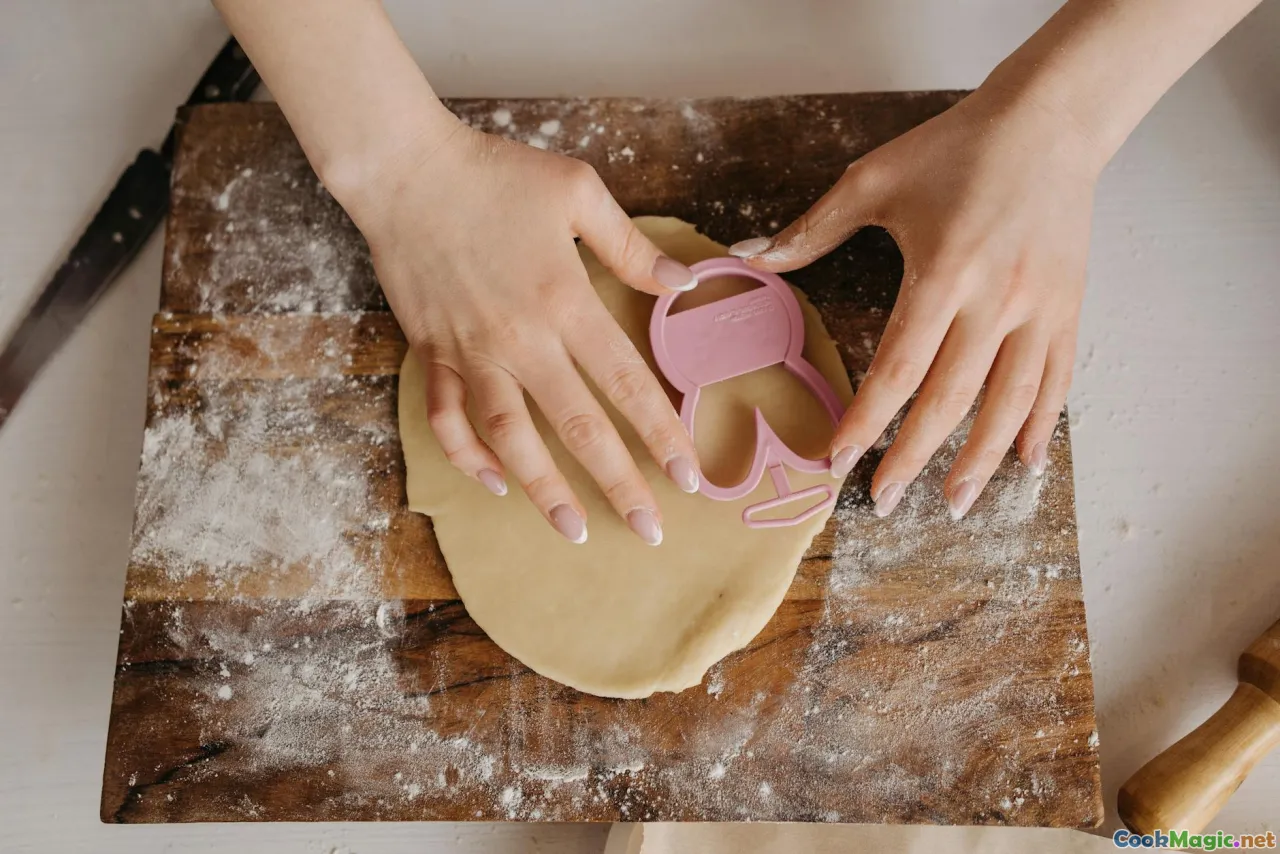
You can absolutely make a bakery-worthy galette at home. The trick is respecting temperature, resting times, and a few small details that make the difference between good and glorious.
If making puff pastry from scratch is a bridge too far this week, buy the best all-butter puff pastry you can find. In France, that might be labeled “pur beurre.” In other places, look for European-style butter content in the ingredients, not shortening. That said, if you want to try homemade puff, I’ve included a formula below.
Ingredients (for a 24–26 cm galette):
For the puff pastry (pâte feuilletée, optional; yields more than you need):
- 500 g T55 or all-purpose flour
- 10 g fine sea salt
- 250–260 g cold water
- 50 g unsalted butter, softened (for the détrempe)
- 375 g dry butter (beurre de tourage) or high-fat European butter (82–84%), cold, for the beurrage
For the pastry cream (crème pâtissière; to enrich the almond cream):
- 250 g whole milk
- 1/2 vanilla bean or 1 tsp pure vanilla extract
- 60 g granulated sugar
- 2 large egg yolks (about 36 g)
- 20 g cornstarch
- 20 g unsalted butter
For the almond cream (crème d’amande):
- 120 g unsalted butter, very soft
- 120 g granulated sugar
- 120 g finely ground almond meal (blanched almonds)
- 2 large eggs (about 100 g total)
- 10 g cornstarch or all-purpose flour
- 2 tbsp dark rum (or 1 tsp almond extract + 1 tsp orange blossom water if avoiding alcohol)
- Zest of 1/2 orange (optional but lovely)
To assemble:
- 2 disks of all-butter puff pastry, 24–26 cm diameter, 3–4 mm thick
- 1 fève (porcelain charm), washed and dried
- 1 egg yolk + 1 whole egg + pinch of salt + 1 tsp cream (for the egg wash)
- Simple syrup (equal parts sugar and water by weight), heated until the sugar dissolves
Make the puff pastry (can be done 1–2 days ahead):
- Détrempe: Mix flour and salt in a bowl. Rub in the 50 g soft butter. Add cold water and bring together gently into a dough; don’t over-knead. Shape into a flat square, wrap, and rest 30 minutes in the fridge.
- Beurrage: Shape the cold butter into a square roughly half the size of your détrempe square. Enclose the butter in the dough like an envelope (a “tour en portefeuille”).
- Lamination: Roll gently into a long rectangle. Give it a single turn (fold in thirds like a letter). Rotate 90 degrees. Rest 20–30 minutes in the fridge. Repeat this process for a total of 5 single turns (or 3 double turns). Always keep butter cold and pliable; if you feel it getting soft, chill it. After the last turn, rest at least 1 hour, then roll to 3–4 mm and cut two clean discs using a template (inverted cake pan works well). Chill the discs on a sheet pan while you prepare the filling.
Make the pastry cream:
- Heat the milk with vanilla just to a simmer. Whisk sugar and yolks until pale, then whisk in cornstarch. Temper with hot milk, return to the pot, and whisk over medium heat until bubbling and thick. Off heat, whisk in the 20 g butter. Spread onto a tray, cover with plastic to avoid a skin, and chill completely.
Make the almond cream:
- Beat the soft butter and sugar until fluffy and pale. Add almond meal and cornstarch; blend smooth.
- Add eggs one at a time, mixing until absorbed. Beat in rum and orange zest if using. Don’t overmix; you want it light but not aerated.
Make the frangipane:
- Blend 2 parts almond cream with 1 part pastry cream by weight (e.g., 300 g almond cream + 150 g pastry cream). The result should be smooth, spreadable, and barely mounding. Chill 20 minutes to firm slightly.
Assemble:
- Set one pastry disk on a parchment-lined baking sheet. Pipe or spoon the frangipane into the center, leaving a 2–2.5 cm border. It should mound in the center slightly but not be too thick near the edge.
- Nestle the fève into the filling near the edge, not the center. Remember where you put it.
- Lightly brush the exposed border with water or a diluted egg wash (some bakers prefer water to avoid sealing the layers too aggressively). Place the second disk on top. Press the edges to seal, then flip the galette so the seam faces down (optional but helps a smooth top). Use the back of a small knife to create a scalloped edge: small angled notches around the circumference.
- Chill 30 minutes.
- Brush the top with egg wash, avoiding the cut edges to preserve the rise. Chill 10 minutes, then brush again. With a small, sharp knife, score your pattern: spiral, chevrons, wheat. Prick a tiny hole in the center as a steam vent.
- Bake at 200°C (392°F) for 15 minutes, then reduce to 180°C (356°F) and bake 25–30 minutes more, rotating once, until deep golden brown and crisp. If using convection, drop temperatures by about 10–15°C.
- While hot, brush with a thin layer of hot simple syrup for a gentle gloss. Cool at least 20 minutes before slicing to allow the filling to set.
Serving: The galette is at its best slightly warm or at cool room temperature. Keep the crown nearby.
Pro Tips from the Bench

- Chill is everything. Warm butter smears; cold butter layers. If the dough fights you, rest it. If it weeps butter in the oven, it was too warm going in.
- Egg wash discipline. Never brush the cut edges, or you’ll glue layers together and prevent a good rise. Keep it off the sides—aim for the top surface only.
- Flipping helps. After sealing, flipping the galette seam-side down often produces a cleaner dome and reduces leakage.
- Venting matters. A tiny hole in the center helps manage steam; don’t skip it. For very domed galettes, some pros nick a few discreet vents along the scoring.
- Keep the fève off-center. Toward the edge reduces slicing accidents and flawed center pieces.
- Rest before baking. A 20–30 minute chill after assembly reduces shrinkage and helps the pastry relax, yielding a more uniform shape.
- Syrup sheen, not shellac. A light glaze of hot simple syrup gives a jewel-like shine without a candy-hard finish. Avoid over-glazing; you want crispness.
Regional and Modern Variations to Try

The almond version is classic—but bakers are creatures of curiosity. Consider:
- Pistachio-raspberry: Swap a third of the almond meal for finely ground pistachios and tuck a layer of raspberry confiture under the frangipane. The green-and-red cross-section earns audible gasps.
- Chocolate-praliné: Fold 100 g dark chocolate (melted and cooled) and 100 g hazelnut praliné paste into the almond cream; finish with cocoa nibs for crunch.
- Citrus and bergamot: Add candied orange peel and a hint of bergamot oil to the filling, then glaze with a bergamot syrup—perfume you can eat.
- Comtoise-style: Make the choux-based galette from Franche-Comté, perfumed with orange blossom water. Lighter, almost custardy.
- Southern crown: Bake the Provençal brioche ring with orange blossom and candied fruits: angelica, orange, citron. The chew of candied fruit against tender crumb is a different kind of joy.
- Savory play (for a twelfth-night supper): A puff pastry round filled with celery root purée, Comté, and sautéed mushrooms, scored and baked golden. No fève here—just a wink to the tradition.
If you’re in Paris, keep an eye on seasonal creations: Pierre Hermé has riffed on the theme with his Infiniment Amande (a laser-precise ode to almond), Claire Damon at Des Gâteaux et du Pain often plays with fruit-acid balances, and La Maison du Chocolat leans into cocoa-rich frangipane. In the 11th, Boulangerie Utopie has offered black sesame galettes with a deep, nutty savor that makes you rethink January entirely.
Pairings, Serving Temperature, and Leftover Magic

- Drinks: Normandy or Breton cider (brut) has the right tension to cut through butter. A demi-sec Champagne, Crémant d’Alsace, or even a lively Vouvray works beautifully. For non-alcoholic options, try sparkling apple must or a strong black tea (Darjeeling, Yunnan) that won’t fight the almond. Thick hot chocolate à l’ancienne turns it into an afternoon ritual.
- Temperature: Slightly warm is ideal—just a 10-minute kiss in a 150–160°C oven to crisp the layers. Microwave equals tragedy; it destroys the flake.
- Leftovers: Cube and griddle in butter for “galette pain perdu,” a decadent French toast crowned with roasted apples. Or crumble leftover galette into parfait glasses with citrus segments and a dollop of crème fraîche—the almond turns the whole thing into trifle with backbone. You can also cut narrow wedges, bake low and slow to crisp, and serve as a crunchy accompaniment to coffee.
Where to Taste: A Short Address Book
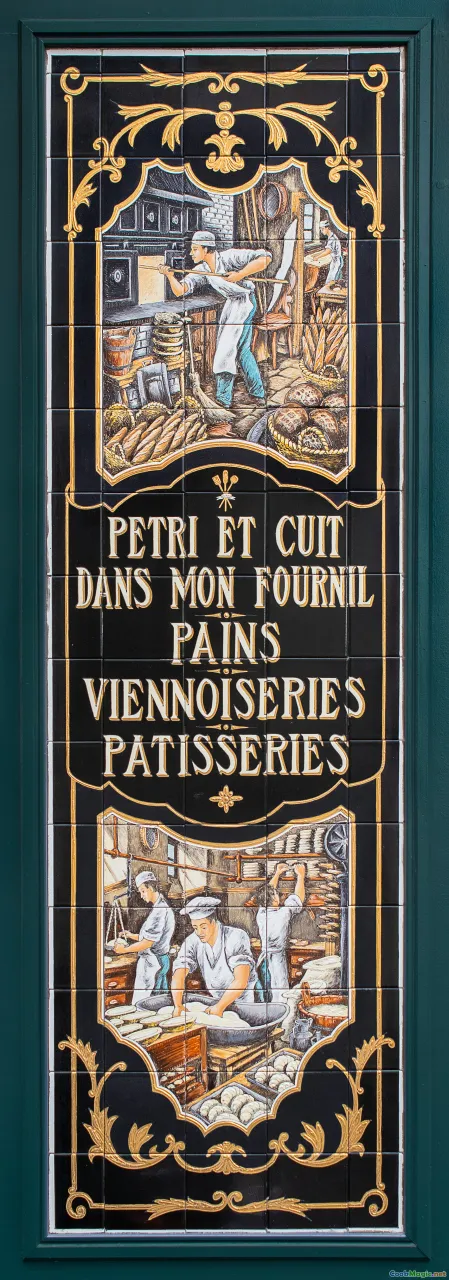
For those lucky enough to be in France in January, a few reliable addresses for exemplary galette:
- Stohrer (51, rue Montorgueil, Paris 2e): The oldest pâtisserie in Paris still turns out a classic almond galette with a stately gloss and precise lamination.
- Pierre Hermé (multiple locations, Paris): Expect technical perfection and occasional flavor forays, but the “Infiniment Amande” remains a masterclass in restraint.
- Des Gâteaux et du Pain (63, boulevard Pasteur, Paris 15e; 89, rue du Bac, 7e): Claire Damon’s seasonal intelligence shines; her galettes often balance almond with bright notes of fruit.
- Blé Sucré (7, rue Antoine Vollon, Paris 12e): Known for madeleines, yes, but Fabrice Le Bourdat’s galette is textbook golden and deeply almondy.
- Poilâne (various, Paris): A rustic-spirited take, sometimes with apple notes—worth a detour for those who like a whisper of fruit with almond.
- Sève (Lyon): Elegant, glossy, with refined frangipane; locals queue for a reason.
- Pâtisserie Pillon (Toulouse): An address where the southwestern sweet tooth and almond meet with finesse.
Outside France, many French bakeries offer galettes during early January:
- Dominique Ansel Bakery (New York, Los Angeles): Pre-order is essential; expect crisp lamination and thoughtful flavors.
- Ladurée (various global cities): A more delicate crumb and a very polished aesthetic—be prepared for a beautiful box and crown.
- Neighborhood French bakeries: Call ahead in late December; many require pre-orders and sell out fast on weekends.
Pro tip: Don’t underestimate the humble neighborhood boulangerie. In January, it’s often where you’ll find a baker who’s been scoring chevrons by hand for decades—and knows exactly how brown “brown enough” should be.
Kitchen Science: Puff, Aroma, and the Alchemy of Heat

- Puff’s lift: Puff pastry rises because thin layers of dough alternate with layers of fat. As the galette bakes, water in both the butter and the dough turns to steam, expanding and lifting the dough layers while the melting fat prevents them from sticking together. Correct lamination and cold handling keep the layers distinct; too warm, and butter leaks, sacrificing lift.
- Butter plasticity: Butter must be pliable, not brittle or greasy. Around 16–18°C is the sweet spot for rolling; above 22°C, it starts to weep. Using high-fat European-style butter with low water content gives stronger lift and cleaner flavor.
- Scoring and vents: Surface scoring does two things—releases localized steam to prevent ballooning and increases caramelization by creating micro-ridges that catch heat and glaze.
- Frangipane fragrance: Almond’s aroma owes much to benzaldehyde, naturally present in almond kernels. A little rum or orange zest doesn’t mask it; it amplifies the nut’s perfume and adds top notes that read as festive. Vanilla in the pastry cream contributes creamy depth—think of it as harmony rather than solo.
- Crisp vs. soggy: Moisture migration is the enemy after baking. A hot syrup glaze sets quickly; it shouldn’t soak. Storing the galette under a cloche at cool room temperature preserves crispness better than refrigeration, which can dull flavor and texture. Re-crisp in a low oven; never trap it hot in plastic.
A January Memory I Carry
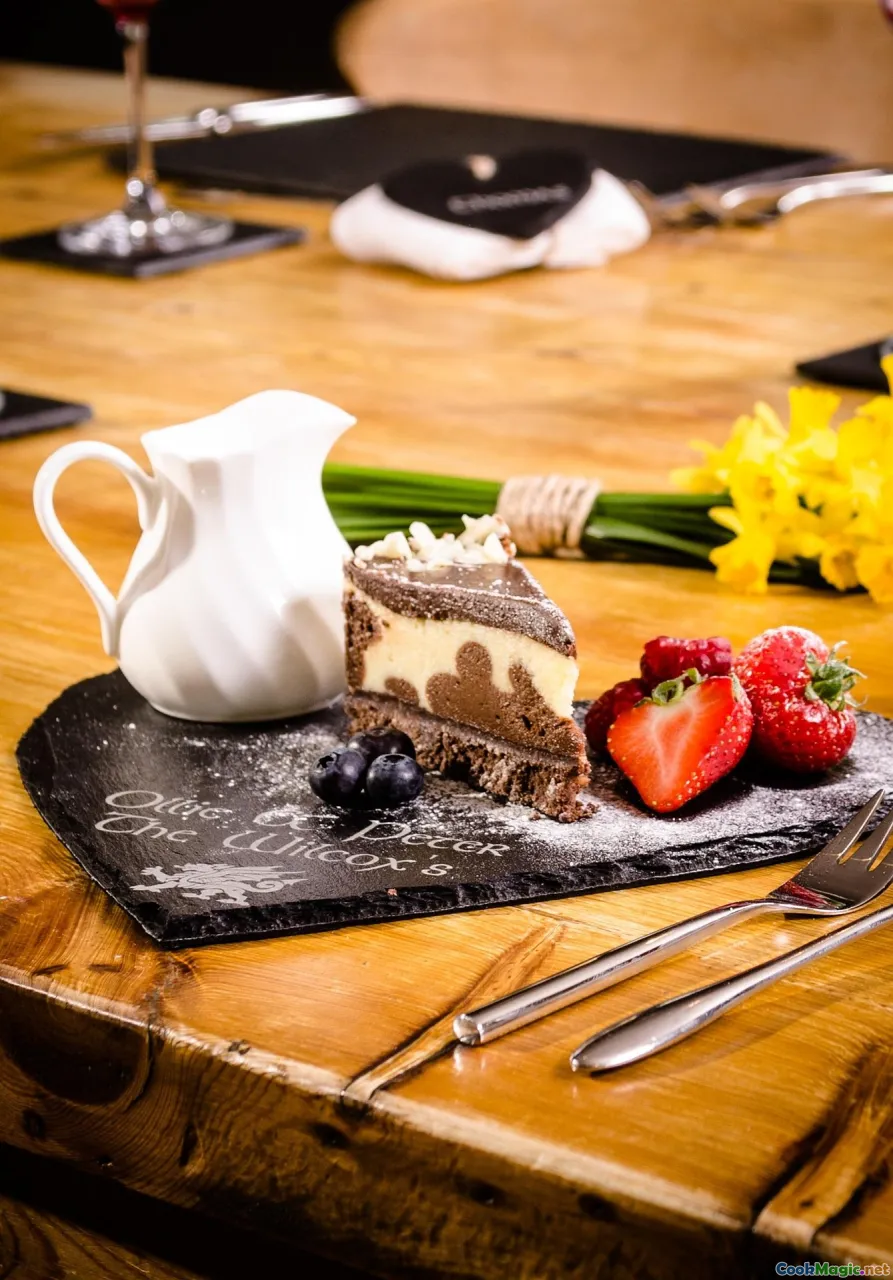
I first learned what a galette could be in Angers, in a narrow kitchen with a view of slate rooftops. My host family had ordered theirs from a boulanger on Rue Saint-Laud known for semolina-crusted ficelles. The galette was still warm, its surface scored in a spiral like a nautilus. We slid it from the box to a crackling sheet of parchment, and a tiny plume of butter-sweet steam rose as the knife sank through.
Léa, the youngest, crawled under the table at her mother’s urging, giggling, cheeks rosy from the cold air trapped in her scarf. “Pour Papa!” she called, and a slice went left. “Pour Mamie!” A slice right. My piece was third, still warm at the tip, the layers stacked like thin pages. The first bite was a lesson: the upper crust shattered against my lips; then the frangipane, barely sweet, almond filling with an almost custardy slip, a breath of rum that registered more as warmth than flavor. The bottom stayed crisp, no gumminess; the whole thing was balanced—nothing heavy, nothing greasy. Somewhere around slice five, a fork pinged porcelain. “Le roi boit!” The crown went to Mamie, who wore it with the dignity of someone who’d earned many crowns and didn’t need to pretend.
Later, walking home, the street smelled faintly of butter—the city itself exhaling—and I understood why this cake had outlasted empires. In the grey weeks when winter feels endless, the idea that a trinket can make you queen, that a circle of pastry can bend strangers toward laughter, has the force of a sacrament.
Troubleshooting Your Galette
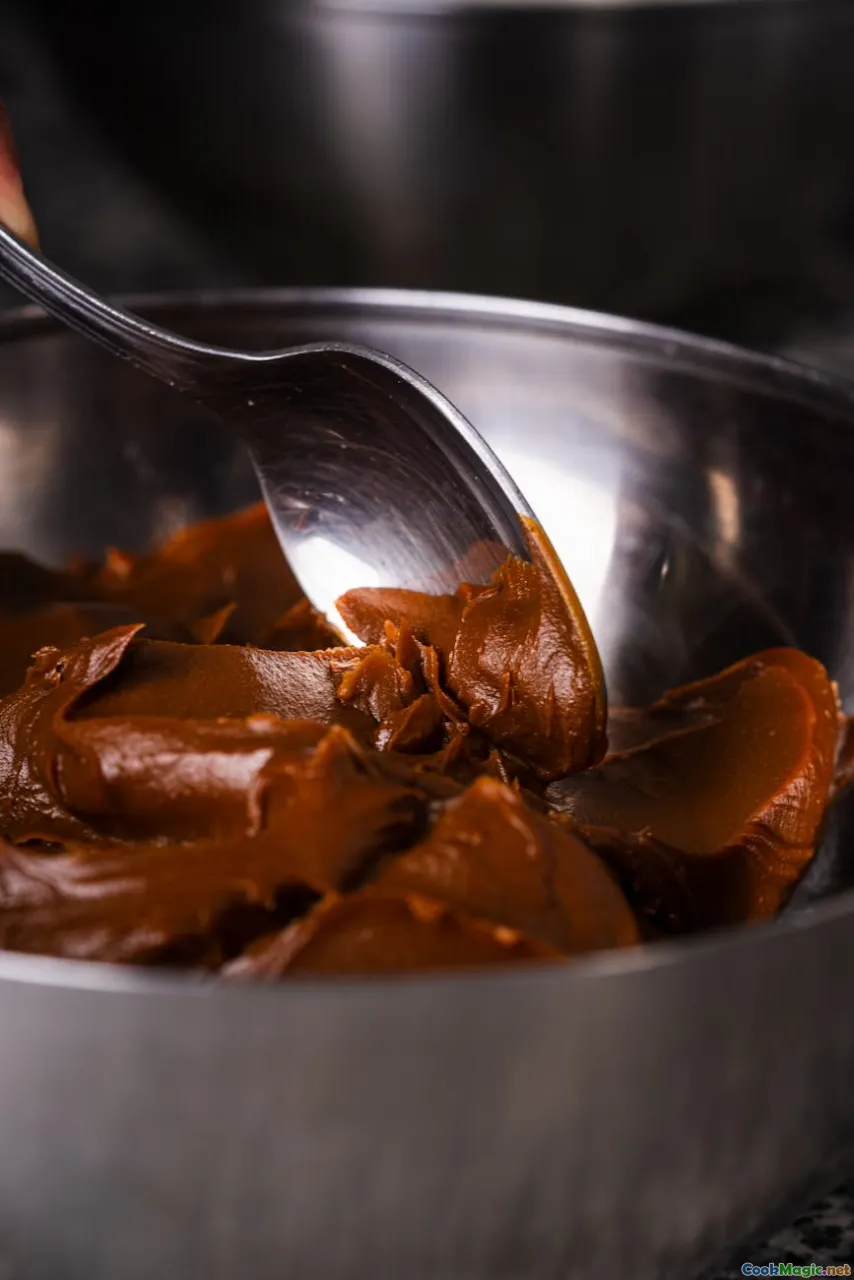
- Filling leaked: The seal may have been weak or the pastry too warm. Brush the edge with a touch of water, not egg, to avoid gluing layers shut, and press firmly. Create a clean, even border; consider flipping seam-side down before baking.
- Puffy dome, separated top: Lack of vent or scoring too shallow/deep. Prick a tiny central vent and score with a shallow, confident hand. If your oven runs hot at the top, bake on a lower rack.
- Pale crust: Not enough initial heat or timid egg wash. Start hotter (200°C) for 15 minutes before reducing. Two light coats of egg wash help color and shine; avoid washing the edges.
- Greasy base: Butter leaked—likely the dough was warm, the butter ill-distributed, or the sheet pan too thin. Chill assembled galette before baking and use a preheated steel or sturdy sheet for better bottom heat.
- Soggy bottom: Filling too loose or not cooled, or pastry too thick at base. Chill frangipane before assembling; keep thickness even.
- Fève sliced in half: Place the charm near the edge and remember its location. You can also insert it from underneath after baking once the galette cools slightly.
- Cracked top: Overfilling or too aggressive scoring. Leave a 2–2.5 cm border and keep the knife shallow.
Storage: Keep at cool room temperature under a dome or lightly tented with paper. Best within 24 hours. To re-crisp, 10 minutes at 160°C. Avoid the fridge unless your kitchen is very warm.
Freezing: Assemble and freeze the raw galette (without egg wash) on a tray until solid, then wrap well. Bake from frozen, adding 10–15 minutes and brushing with egg wash halfway if you prefer extra gloss.
Better Butter, Kinder Almonds: An Ethical Slice
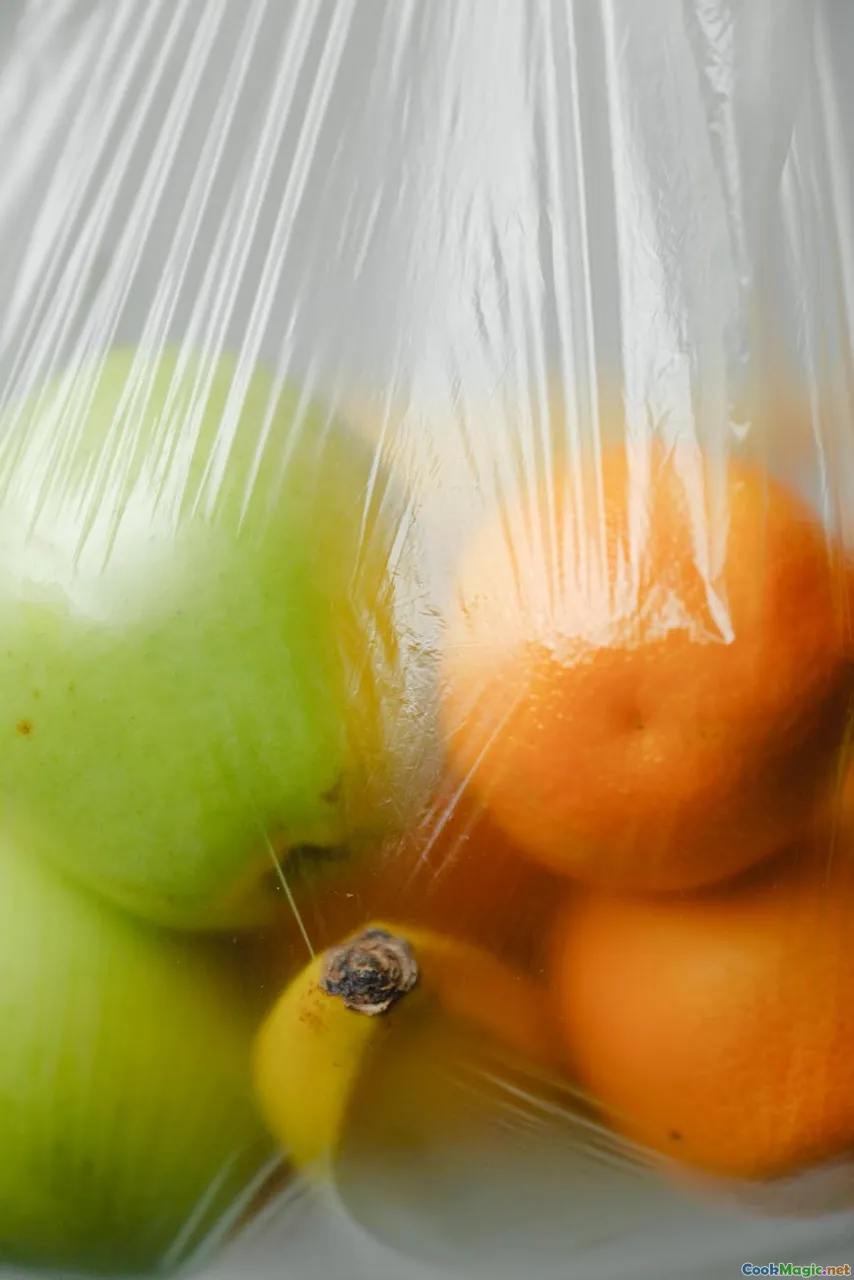
A few choices can make your galette both more delicious and more responsible:
- Butter: Choose all-butter pastry—never palm oil. If you can, seek out AOP butters like Isigny or Charentes-Poitou. Higher-fat butters yield cleaner flavor and better lamination.
- Almonds: Almond cultivation is water-intensive. Consider sourcing from growers who invest in water stewardship and pollinator-friendly practices. In some variations, swap a portion of almond meal for hazelnut or walnut from local orchards.
- Flour: A good French-style flour (T55) or unbleached all-purpose from stone mills will behave beautifully in lamination and support local grain economies.
- Fèves and crowns: Reuse crowns and select ceramic fèves over plastic. Many bakeries offer themed porcelain charms designed to last; better to pass them down than toss them.
- Packaging: Bring your own flat container when picking up from a neighborhood bakery to cut down on cardboard.
Because if there’s one thing the galette teaches, it’s that pleasure and conscience need not be enemies; generosity tastes better when it extends beyond the table.
The first time you tuck a fève into frangipane, you feel a conspirator’s thrill, as if you were hiding a secret in plain sight. That little act—of tucking hope into a pastry and passing the knife—reminds us what January needs: warmth, ritual, a bit of pageantry to make the grey bright. Whether you find your crown in a Parisian window or coax it from your own oven, the Galette des Rois is an invitation to start the year sweetly, to proclaim, for a moment, a kingdom of friends. And when the fork strikes porcelain, remember the oldest truth in the room: joy is more delicious when shared.









